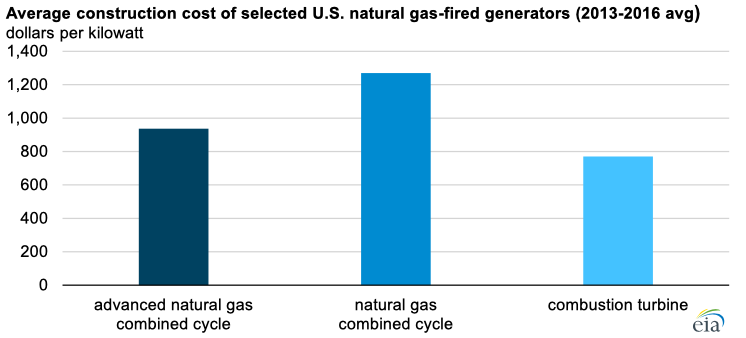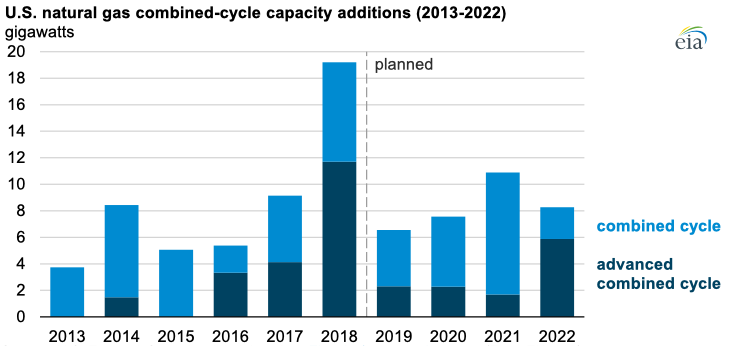Lower natural gas prices in recent years have spurred the construction of new natural gas-fired power plants in the United States. Of the new U.S. natural gas capacity added since 2016, 31% use advanced natural gas-fired combined-cycle (ANGCC) units. Greater use of the new, larger ANGCC designs has led to efficiency gains and economies of scale, which have resulted in reduced capital construction costs. These lower costs are likely to substantially increase ANGCC’s share of new U.S. natural gas capacity additions in future years.

Natural gas-fired combined-cycle generating technology has evolved over the past few decades. Generators have large, heavy-duty natural gas turbines that are defined by their firing temperatures and unit capacity ratings. Beginning in the early 1960s, 20-megawatt (MW) natural gas-fired turbines became available. By the mid-1980s, the highest natural gas-fired turbine rating reached 100 MW, and it had increased to 200 MW by the late 1990s. With firing temperatures that are more efficient, today’s ANGCC units are rated at 320 MW.
According to an April 2018 PJM report, the cost per unit of ANGCC installed capacity at PJM’s next capacity auction will be 25% to 30% lower compared with older, conventional natural gas-fired combined-cycle (NGCC) units. With that rate of cost decline, ANGCC generators will cost slightly more than combustion turbines.

The economies of scale associated with the increasing capacity of ANGCC units are reflected in a significantly lower per-kilowatt cost for new ANGCC units compared with NGCC units. From 2013 through 2016, average reported construction expenditures for new ANGCC units were $936 per kilowatt, which was 26% lower than the $1,270 per kilowatt average cost of NGCC units and 20% higher than the $770 per kilowatt average costs reported for a simple-cycle combustion turbine.
Through 2050, EIA’s Annual Energy Outlook 2019 Reference case projects that the lower cost for advanced combined-cycle units could result in the installation of 235 gigawatts (GW) of ANGCC technology, assuming current laws and policies are unchanged throughout the projection period.
Principal contributor: Scott Jell











